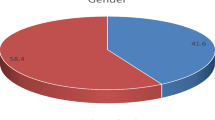Abstract
Microbial contamination constitute as one of the major factors for post-operative otorrhoea. Sterile discharge was observed in 44.4%, mixed aerobic in 26.8%, anaerobic in 9.9 and mycosis in 19.7% cases during 1st month irrespective of the pre-operative bacterial flora. The mycotic contamination was observed to continue or recur in most of these cases till 2nd month when it cleared rapidly. Anaerobes,.on the other hand, showed rapid clearance in 2nd month and appeared to have been associated with covering and bandaging of ear during this period. Gram-negative organisms, however, continued well beyond 3rd month in many cases inspite of systemic antibiotics. It seems that high concentration of antibiotics in serum does not provide adequate bioavailability at the site of contamination in the ear. The contamination is indirectly proportional to the aural hygiene and post-operative care. No immunological predisposition for otorrhoea could be established in this study.
Similar content being viewed by others
References
Apte, B.P. (1960): Towards a dry ear,Indian Journal of Otolaryngology,12: 19–97.
Collins E.G. (1964): The Problem of the Mastoid segment in tympanoplasty,Journal of Laryngology & Otology,78 : 1004–1021.
Malik, M.K., Dayal, D. and Khan, A.M. (1975): Bacteriological Study of chronic suppurative otitis media,Indian Medical Gazette,15 : 345–348.
Malik, M.K., Dayal, D. and Khan, A.M. (1975): ‘In vitro’ and in vivo evaluation of change in local pH on bacteria in chronic suppurative otitis media,Journal of Laryngology & Otology,89 : 837–843.
McGuken, F., (1958): Recent advances in tympanoplastic surgery,Journal of Laryngology and Otology,72 : 535–545.
Mishra, S.G., Kushwaha, J.M.L. and Satya Vrat, (1986): Clinicopathological study of post-operative otorrhoea,Indian Journal of Otolaryngology,38 : 8.
Morellisori, P., Ojala, K., Kangros, R., and Sipila, P. (1981): Comparison of pre and post-operative bacteriology in chronic ears,Journal of Laryngology & Otology,95 : 1023–29.
Panje, W., Physiological aspect of wound healing in Scot Brown’s Otolaryngology volume 3,Ed. Kerr, A. G. 5th Ed. Butlher-worths, London, page 563.
Palva, T, (1963): Surgery of chronic ear without cavitv,Archives Otolaryn-glogy,77 : 570–580.
Portman, M., (1963): Tympanoplasty, Technique and experiences with tympanoplastic surgery,Archives Otolaryngology 78 : 2–19.
Thorburn, J.B. (1960): A critical review of tympanoplastic Surgery,Journal of Laryngology & Otology,74 : 453–474.
Author information
Authors and Affiliations
Rights and permissions
About this article
Cite this article
Mishra, S.G., Kushwaha, J.L.M. & Yrat, S. Microbial studies of post-operative mastoid cavities. Indian J Otolaryngol 42, 63–65 (1990). https://doi.org/10.1007/BF02993192
Issue Date:
DOI: https://doi.org/10.1007/BF02993192



